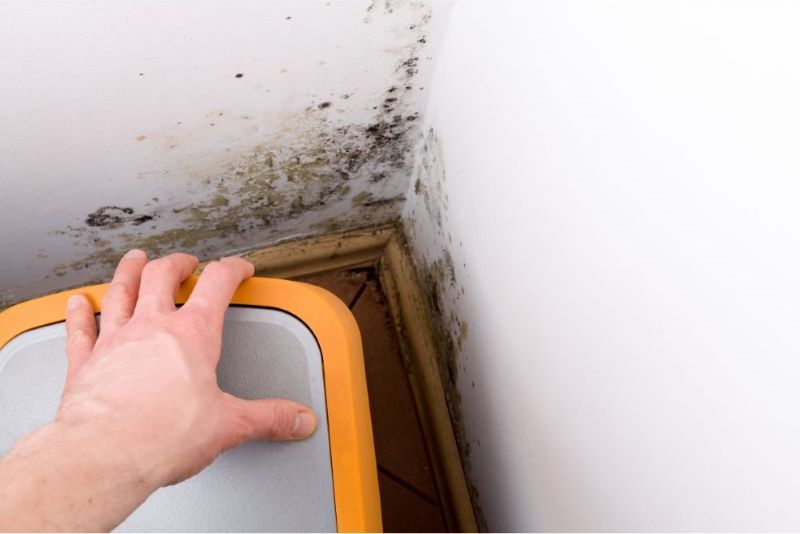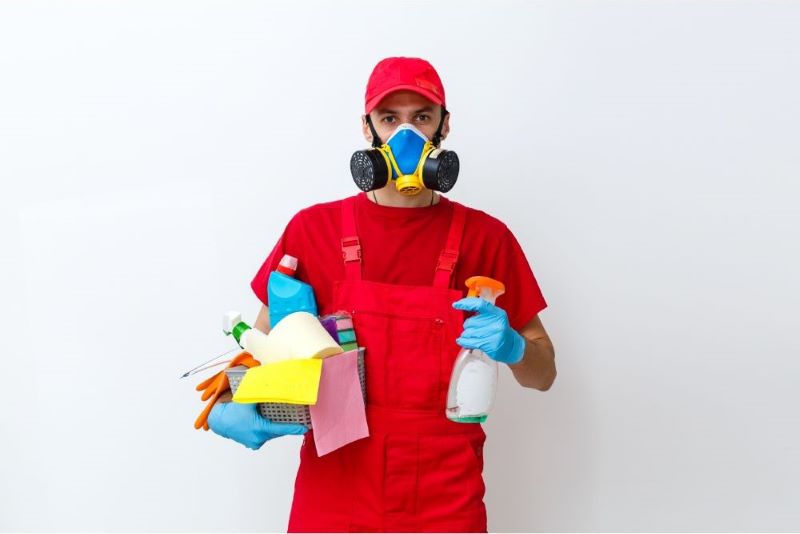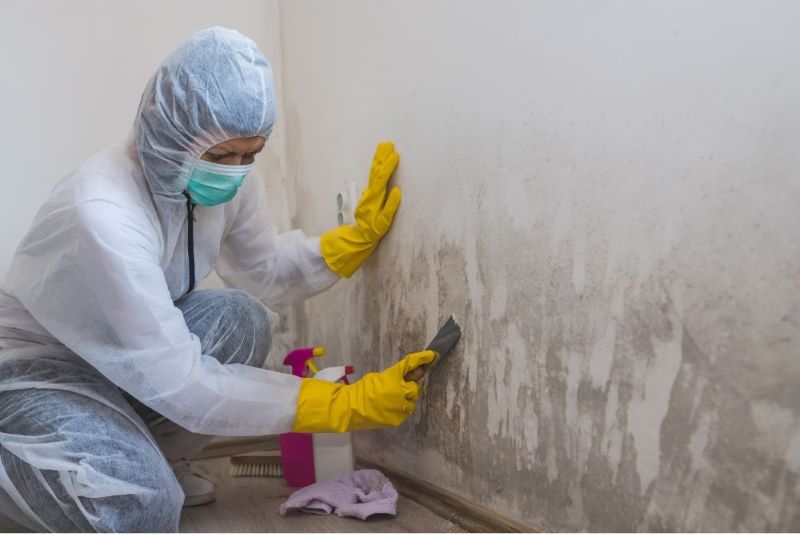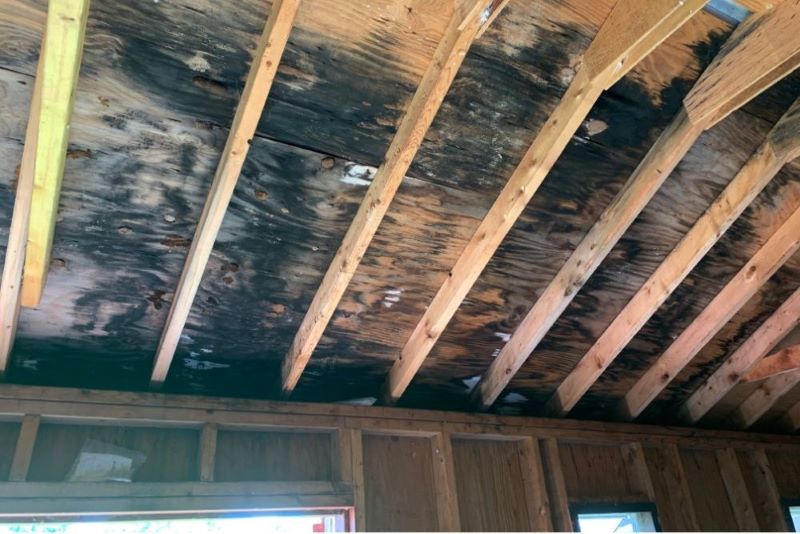Wood is amazing at absorbing water, hence mold often grows on wooden surfaces. It is simply the right conditions for a mold infestation—a combination of moisture, warm temperatures, and mold spores—which are always in the air.
Black blotches, green splotches, or white deterioration on the wood are the most common signs of mold growth. You must act right away if you notice any of these areas. Numerous mold species can be found in outdoor as well as indoor environments. Even though many molds are safe for you to inhale, some of them, especially if they are on your property, could be harmful to your health. Continue reading the article to learn how to kill mold on woods.
5 Easy Steps on How to Kill Mold on Wood
Mold and mildew grow in wood because they naturally absorb and hold onto water. Mold remediation needs to be done right away if your baseboards, trim, or furniture has been infected and damaged. By taking immediate action, you can avoid having to do as much cleaning and guarantee that the health of your family is not put at risk due to mold. You can take care of the problem yourself as long as the spores haven’t spread to an area bigger than 10 square feet. Here are the 5 easy steps on how to kill mold on wood, which is a skill that can save you money.
Step 1: Find the Source

Find the source of the mold growth in your wood, whether it is a burst pipe, water damage, or a high level of moisture.
Step 2: Put on a Protective Gear

When dealing with mold, it’s important to take precautions because it can be harmful if inhaled or consumed. To stop mold spores from entering your lungs, put on an air mask, rubber gloves, safety goggles, and most importantly, rubber gloves. Wear protective gear if you want to use a bleach-containing cleaning product to protect your clothing against stains.
Step 3: Clean and Vacuum the Area

Clean and vacuum the infected wood area (together with any accumulated dirt and debris) to remove any loose mold spores using a machine fitted with a HEPA filter. When finished, empty the vacuum bag or canister into a plastic bag and dispose of it carefully outside. To ensure that no spores escape, make sure the vacuumed material is securely wrapped in a plastic bag.
Step4: Kill the Mold

Water and Soap
The best mold remover is a mixture of warm water and dishwashing soap. Spray the infected wood with a solution of water and a few drops of dish soap, let it sit for a few minutes, and then wipe it clean. Leave the wood to dry.
If this technique is ineffective, consider spraying the infected area and sponging up any extra liquid while you clean with a soft-bristled brush to gently scrub away the mold. After that, use a towel to thoroughly dry the surface.
White Distilled Vinegar
White distilled vinegar can kill mold and mold spores due to its acetic acid content. Using a spray bottle, mix equal parts vinegar and warm water, then spray the mold with this mixture. After letting the solution dry for an hour, use a damp cloth and a dry towel to clean the surface.
Borax or Baking Soda
Mix a cup of water and a spoonful of borax, then use a soft-bristled brush to apply this mixture to the mold. Brush the mold away, leaving the wood with the borax solution. Avoid wiping away the extra liquid with a sponge. Run a fan or dehumidifier in the area to ensure that the wood’s surface dries quickly and thoroughly while the Borax is still subsurfaced. The slight abrasiveness of borax will help to remove the stain.
Mold Remover
A chemical mold remover can be helpful if everything else fails. These products are available online and at your neighbourhood hardware store. Find a mold remover that is safe for wood.
Step 5: Sand the Wood
Your mold problem should be resolved by these cleaning solutions, but sanding will be your last option if there is any mold remaining.
Sand the area that is infected with 100-grit sandpaper while being careful not to remove too much of the surrounding material. It’s a good idea to refinish the wood after sanding, both for aesthetic reasons and to stop a recurrence in the future. Lastly, remove all the clothes and other items that came into contact with the mold. Then, start trying to determine ways to minimise the amount of moisture in the area.
Mold Harmful Effect

Visible mold symptoms are the most noticeable. Another sign is a musty odor.
Long-term mold exposure can cause health problems. Mold exposure increases the risk of health problems for those with weakened immune systems or lung problems. The most common signs are as follows:
- Congestion and a runny nose
- Coughing
- Headache
- Irritation of the eyes
- Lung irritation
- Skin irritation
- Sneezing
- Sore throat
- Wheezing
Call your doctor if you experience more than two of these symptoms. Never be afraid to ask for help from a medical professional.
Like termites, mold is capable of eating your wood surfaces and it comes in many kinds of forms. If you’re unsure whether your wooden furniture is infected, keep an eye out for these signs:
- Wood that is warped, cracked, or peeled
- Continuous mold growth
- Mold developed in a wet, low-light environment
Summary
You are now aware of how to kill mold on wood. Whenever there is a mold problem, prevention is always best to cure. Maintaining low indoor humidity levels and taking care of any water leaks immediately, no matter how little they may seem, are the best ways to stop mold growth in wood on your property.
Although remediation skills are essential, regular maintenance and preventative measures should also be put in place to keep mold away. Keep wood surfaces dry and well-ventilated to prevent mold growth. Address any water leaks or moisture problems right away to stop mold from spreading. Regularly check and clean areas that are prone to mold growth, such as basements, bathrooms, and kitchens.

